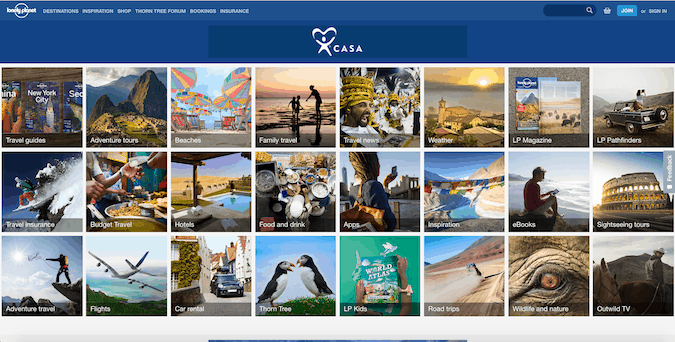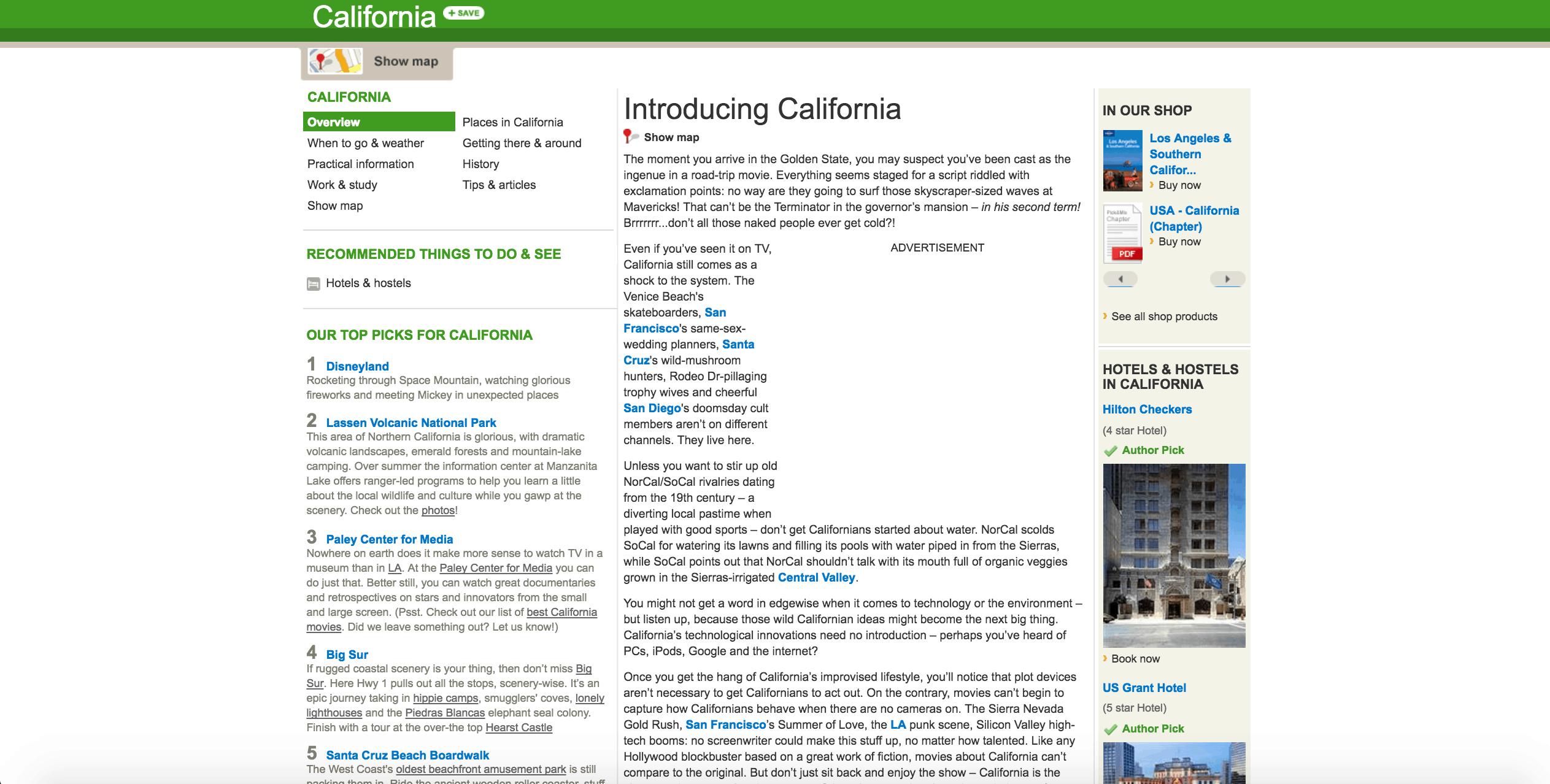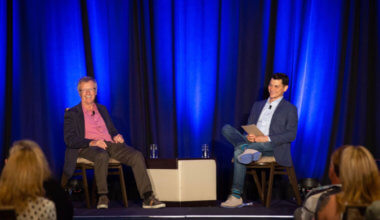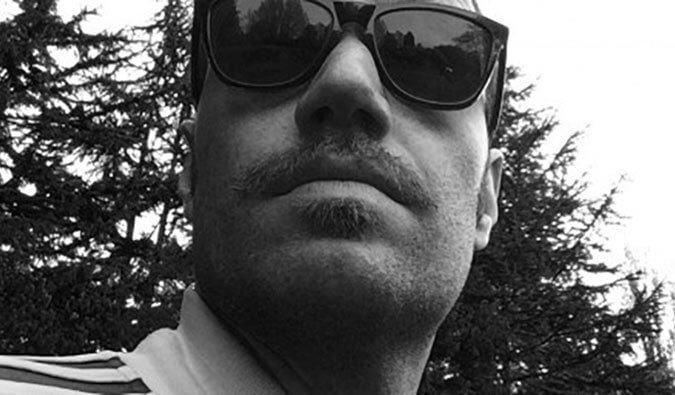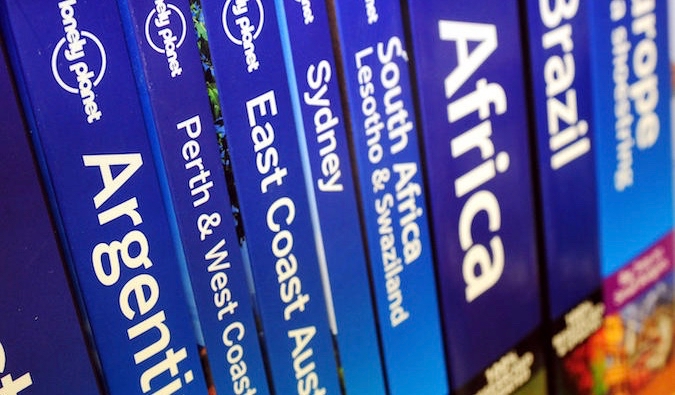
Updated: 01/19/2019 | January 19th, 2019
When I decided to quit my job and travel the world, I walked into a bookstore and bought Lonely Planet’s Southeast Asia on a Shoestring. I was in Thailand and was eager to get started. Buying that guidebook made my impulsive decision seem real. Thumbing through its pages on my flight home, I was hooked. I loved its emphasis on budget travel and backpacking, the offbeat destinations, and its quirky and funny writing. As I planned my trip, LP’s “shoestring” guides were stacked high on my desk — and I became a permanent customer of Lonely Planet guides. Their personality matched mine and I was hooked.
Dubbed “the backpacker’s blue bible,” Lonely Planet’s guidebooks focused on unique destinations and budget travel, which made them a staple of travelers worldwide. For good or ill, Lonely Planet often made destinations, hostels, and restaurants.
Sure, its guides became synonymous with mass tourism, but for me, they were a great resource to thumb over while on a bus or train, or in a hostel. I navigated with LP maps and used LP guides for basic activity information and to figure out transportation.
But, lately, their quality seems to have gone down a lot. The last couple of times I’ve used their website and guides ended in frustration and disappointment and made me ask myself:
“What the heck is the matter with Lonely Planet?”
Is Lonely Planet still even good or relevant?
While it’s still the largest guidebook company in the world with 25% of the market, it’s fallen from its perch as “the bible” for budget travelers. After being sold to BBC in 2007 and then sold again to a reclusive billionaire named Brad Kelley in 2013, Lonely Planet is a shell of what it used to be. Kelley hired a 25-year-old photographer named Daniel Houghton, who came on board and “invested heavily in a digital revamp and laid off nearly one-fifth of the workforce.”
To further quote that Outside article, “I [the author] ask what the market research says about all that. ‘I didn’t really look at it,’ [Houghton] says, lowering his voice conspiratorially. ‘I don’t really go with market research. I kinda go with my gut.’”
And that’s where much of the blame lies.
What the market really says
As I sat down to write this article, I asked readers on social media what they thought of Lonely Planet. While most people still used Lonely Planet (and guidebooks in general) for preplanning, they reiterated what I kept hearing on the road: the books seem to get more out of date, the writing has lost its edge, the guides have gotten more upscale and less about offbeat and budget destinations, the website is hard to use, and blogs are often better. Here’s some examples of common responses (click here to see them all):
Over the years, travelers I’ve met in person have echoed the same complaint: that LP’s special je ne sais quoi is long gone. In fact, I’ve had some good bonding sessions over the topic!
Clearly, the market has a different opinion about the guides than management. Travelers, while still using the guide, don’t like it as much. I still see people using guidebooks on the road so the problem isn’t that people don’t use guidebooks.
The problem is Lonely Planet itself.
Last year, the CEO was interviewed in Amuse and talked about how he was making LP an uncurated (my word) travel content company: “We’ve never looked at Lonely Planet just as a book company, or a guidebook publisher — in fact my first interaction with Lonely Planet actually was on our website, probably when I was in college — we’ve always looked at it as a content company.”
But guidebooks are not content companies, they are curated resources from experts. We buy them because we don’t want a TripAdvisor or a generic source of information — we want someone who has been there and done that to help us do the same. Whether app, e-book, or paperback, consumers want a trusted source of information. We want someone to cut through the noise for us. If LP is just another generic content company that lists everything and exists to generate ad revenue, then what makes them unique? Are they just a bigger version Condé Nast Traveler or Afar?
It’s true Lonely Planet had problems long before the current management. Tony and Maureen Wheeler, the company’s founders, will be to the first to tell you they failed in the digital space. This is part of the reason they sold LP to the BBC. The BBC in turn just didn’t do much with the company and let Thorn Tree — LP’s forum and the best part of the site — struggle, as there were many mishaps and closings, as well as poor management.
Yet that was in 2013. The current problems are owned by the current management. Their desire to turn Lonely Planet into a content company is a terrible decision that is out of touch with what travelers want.
A rapid decline in quality
The decision to ignore market research and go with their gut explains much of the decline and why the books are a shell of what they used to be. When the company was last bought, most of the old execs were fired, bought out, or driven out. In their place was installed a management team with little knowledge of the industry they were now in.
Multiple sources reached out to me for this article to describe their experiences with Lonely Planet since the buyout. Authors complained about LP’s lack of communication, respect, and input, and about policy changes that communicated to their contributing experts “please go away.”
It’s something I’ve been hearing for years from my LP friends. (When you’re a travel writer, many of your travel-writing friends will be LP writers.)
I’ve long heard rumors and whispers about LP’s recycled content and desk updates (i.e., information written in the office, not from research at the destination), and that seemed to be corroborated by current employees. Often, I’ve heard, Lonely Planet contributors are told to use Google and TripAdvisor to create content.
LP has this giant content management system, where the author submits their research and, from that, they make the guidebook. But I’ve been told that now, after writers enter information into the database, another person — who may have no knowledge of the destination — comes along and assembles a book. So, in the end, you get this disorganized — and often wrong — book.
Because of these changes, writers seem to have developed a disdain for the company and merely deliver what’s “just good enough.” They aren’t paid a lot, work under tighter and tighter deadlines, and don’t feel part of the company anymore.
How much of this is “sour grapes,” I don’t know, but I’ve heard this complaint for enough years by enough sources that I believe it. I don’t blame the writers. I’ve seen my friends on assignment. They have a lot to do and little time to do it in – plus, the pay is terrible. So, it’s no surprise that if you treat the content creators poorly, you’re going to get poor content.
I – and many others – see that reflected in the quality of the guides.
A terrible website
And this decline can be very clearly seen on the LP website. After Houghton first took over, the website looked like this:
I mean, what is this? It’s a bunch of squares (for ants!*). Who thought this was good? It would take me ages to find the square I needed. Often I gave up and simply found a blog instead.
Now, while I like many things about the new Lonely Planet website — the larger pictures and bigger font — the content sections are hard to follow, and navigating the website is just as difficult as ever. I was trying to find information when I was in Lyon recently — and it was just scrolling and scrolling and scrolling. Why? They list like every place in the city – every church, attraction, park, or restaurant. (They do it for all their destinations.) I don’t want every restaurant or attraction — I want guidebooks and experts to give me the best. Distill the information down for me! If I wanted an endless list, I’d go to TripAdvisor or Yelp!
Plus, the information is so hard to find now. Here’s an example of LP’s California page in 2010 and now:
2010:
Now:
(Well, the page is so long and empty that I can’t take an accurate screenshot so here’s a link to see for yourself.)
In the old version, all the essential information is on the page (and if you go to the link for the page, you’ll see that essential information is just below the fold). It was easy to get to where you wanted to go, there were no endless lists, and they gave you the facts you needed. It had what you wanted. In the new version, you scroll, scroll, and keep scrolling. There’s a lot of space, not a lot of curated information, and it’s really hard to find what you are looking for.
It’s not just the California page. One just has to go to Paris to find that Lonely Planet’s “top list” is never-ending. And the descriptions of attractions, restaurants, and bars are even less useful than what Google or Yelp offers. Here’s a description of the Prescription Cocktail Club in Paris (one of my favorites):
With bowler and flat-top hats as lampshades and a 1930s speakeasy New York air to the place, this cocktail club — run by the same mega-successful team as Experimental Cocktail Club (ECC) — is very Parisian-cool. Getting past the doorman can be tough, but once in, it’s friendliness and old-fashioned cocktails all round.
That basic information doesn’t really tell me much about the décor, ambiance, or incredible drinks: the cucumber water you get when you sit down, exposed brick walls and dark wood bar, the jazz music, or the inventive cocktails. (Also, there’s no doorman. That’s simply wrong.) I’d take a Yelp review over the above any day.
When I was searching for things to do in Lyon, it was so difficult to find basic information (again, it’s just endless lists) and suggestions that I just gave up and consulted Yelp and blogs. These sites were better organized, gave me a curated list of places, and provided more detailed descriptions.
So what is the matter with Lonely Planet?
LP’s desire to be a “content company” is clear: the increased articles on the site that seem to exist to only drive page views, the sponsored content from the places (and companies) it reviews, the funneling of people from content to booking sites, the TripAdvisor–style listing of everything (more page views), and the plethora of ads that now litter the site. Additionally, the heavy emphasis on selling tours to destinations seems to go against the grain of independent travel that the company was founded on. You can tell the company has changed simply by what they focus their online content on.
We consumers visit travel blogs and use guidebooks because we want an expert to tell them what’s best. We want someone to distill it all down for them so we don’t have to do the work. It’s why we carry LP guides and not Condé Nast Traveler or Outside magazines on the road. Those are great for inspiration, but not on-the-ground information.
By losing that focus, trying (in my opinion) to appeal to everyone, and attempting to compete with sites like TripAdvisor (and even blogs to an extent), LP has lost what made it great.
I believe companies are better off when they have one thing they focus on. Andrew Carnegie once said, “ ‘Don’t put all your eggs in one basket’ is all wrong. I tell you, ‘Put all your eggs in one basket, and then watch that basket.’ ”
Lonely Planet should be a guidebook company. Being a guidebook company doesn’t mean you have to focus on physical books, but it means you focus on your one thing. Its shift from its singular mission to becoming a “digital content hub” means that it’s no longer unique — and when you are no longer unique, consumers have no reason to stay loyal. As Simon Sinek once said, “People don’t buy what you do, they buy why you do it.”
You used to know what the Lonely Planet brand meant and what they stood for. Now, I don’t know what the company stands for.
LP still is king because of its sheer size. It is the Microsoft of guidebook companies. Not one person I talked to had any loyalty to the brand anymore. They often bought the guides simply because there was no one else selling one to their destination.
I’ve been a loyal LP customer since 2005. Their guidebooks are all over this website. I still buy them. They are often the only game in town to where I want to go. But, lately, I’m not so sure about them anymore. I haven’t given up on them – but I’m getting closer to doing so. It’s hard to watch them morph into something so….forgettable.
So what’s the matter with Lonely Planet?
In short, just about everything.
* Zoolander reference: “What is this? A center for ants!” Ahhh, never gets old!
Update 1/19: Houghton left Lonely Planet in late 2018.
Book Your Trip: Logistical Tips and Tricks
Book Your Flight
Find a cheap flight by using Skyscanner. It’s my favorite search engine because it searches websites and airlines around the globe so you always know no stone is being left unturned.
Book Your Accommodation
You can book your hostel with Hostelworld. If you want to stay somewhere other than a hostel, use Booking.com as it consistently returns the cheapest rates for guesthouses and hotels.
Don’t Forget Travel Insurance
Travel insurance will protect you against illness, injury, theft, and cancellations. It’s comprehensive protection in case anything goes wrong. I never go on a trip without it as I’ve had to use it many times in the past. My favorite companies that offer the best service and value are:
- SafetyWing (best for everyone)
- Insure My Trip (for those 70 and over)
- Medjet (for additional evacuation coverage)
Want to Travel for Free?
Travel credit cards allow you to earn points that can be redeemed for free flights and accommodation — all without any extra spending. Check out my guide to picking the right card and my current favorites to get started and see the latest best deals.
Need Help Finding Activities for Your Trip?
Get Your Guide is a huge online marketplace where you can find cool walking tours, fun excursions, skip-the-line tickets, private guides, and more.
Ready to Book Your Trip?
Check out my resource page for the best companies to use when you travel. I list all the ones I use when I travel. They are the best in class and you can’t go wrong using them on your trip.













